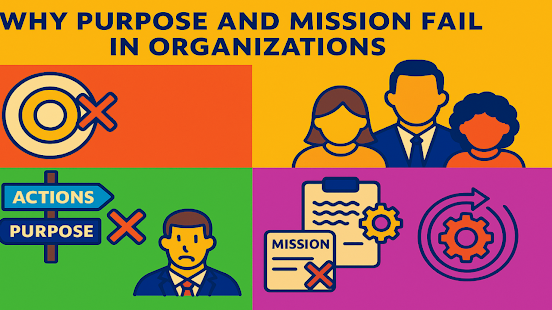In both business and personal relationships, partnerships
are at the core of success. But what truly makes a partnership flourish? It’s
listening. But not just any kind of listening—it's about listening with an open
mind and an open heart.
When both partners genuinely listen to each other, it
creates a foundation of trust, mutual respect, and collaboration, leading to
long-lasting and successful partnerships. However, when listening is absent or
impaired, partnerships suffer, limiting growth and creating barriers in both
business and personal relationships.
What Happens When Partnership Flourishes?
Mutual Respect & Trust: When we truly listen to our
partners, they feel heard and valued, and the feeling is reciprocated. This
trust is essential in building strong business foundations and is often the key
to business growth.
Alignment and Innovation: Active listening creates space for
innovative solutions. When partners listen to each other’s ideas, they find new
ways to move forward, solve problems, and grow the business.
Thriving Relationships: Partnerships that are rooted in
listening don’t just thrive professionally—they also strengthen personal
relationships. A genuine connection with a business partner fosters respect,
empathy, and emotional connection, which benefits both work and personal life.
The Consequences of Partnership Breakdown
While successful partnerships rely on listening, the absence
of it has significant repercussions:
Business Limitations:
When partners don’t listen to each other, decisions become
reactive rather than proactive. Without clear communication and mutual
understanding, businesses stagnate, and growth becomes limited.
Miscommunication leads to missed opportunities and unaligned
strategies, preventing the organization from achieving its full potential.
Impact on Personal Relationships:
When we don’t listen to our partners, walls are built
instead of bridges. We stop truly hearing each other, allowing our preconceived
emotions and biases to dictate our responses. This strain doesn’t just affect
business—it starts to influence personal relationships as well, creating
unnecessary tension and conflict.
The Challenge: Failing to Listen with an Open Mind and Heart
The root cause of partnership challenges often lies in our
approach to listening. We tend to approach conversations with preconceived
notions, emotional biases, and assumptions. This is particularly prevalent in
business partnerships where decision-making is intertwined with emotion.
Instead of listening to understand, we react emotionally to
protect our ideas or interests. This leads to poor communication, unnecessary
conflicts, and missed opportunities for growth and collaboration.
So, How Can We Improve Partnerships for Business Growth?
Here are some actionable strategies that can help improve
partnerships and drive business success:
Listen with Empathy:
Approach every conversation with a genuine intention to
understand your partner’s perspective. Empathy allows you to hear not only the
words being said but also the feelings and intentions behind them. This deep
understanding creates a more collaborative and harmonious partnership.
Stay Open-Minded:
Let go of preconceived notions and be receptive to new
ideas. Listen to your partner without judgment, even if their ideas challenge
your current beliefs or strategies. An open mind fosters innovation and allows
both parties to find common ground.
Respond, Don’t React:
It’s easy to react emotionally when we don’t feel heard.
Instead, practice responding thoughtfully. When we take time to process what
our partner is saying, we can engage in more productive conversations and
develop more constructive solutions.
Foster Mutual Respect:
Listening with empathy and an open heart creates a
foundation of respect in the partnership. When both parties feel heard and
valued, they are more likely to contribute their best ideas and work together
effectively. Respect is a key pillar in any successful business partnership.
Commit to Continuous Communication:
Partnerships require consistent, honest communication. Make
listening a regular part of your collaboration. This ensures that both partners
are aligned, and the relationship remains strong and dynamic as the business
grows.
Why Listening is Essential for Thriving Partnerships
Partnerships are at the core of business growth and
sustainable success. By prioritizing active, empathetic listening, we unlock
the potential for collaboration, innovation, and alignment that drive long-term
success. In both business and personal relationships, listening isn’t just
about hearing—it’s about understanding and creating connections that fuel
growth.
True partnership doesn’t just thrive—it flourishes when both
sides listen and engage with open hearts and minds. When we listen actively and
authentically, we create a partnership that strengthens both the business and
the people within it.
What has been your experience with partnership and the power
of listening? How has it impacted your business and relationships?
#BusinessGrowth #Partnership #Listening #Collaboration
#Trust #Empathy #BusinessRelationships #Leadership #Innovation
#ThrivingBusinesses




